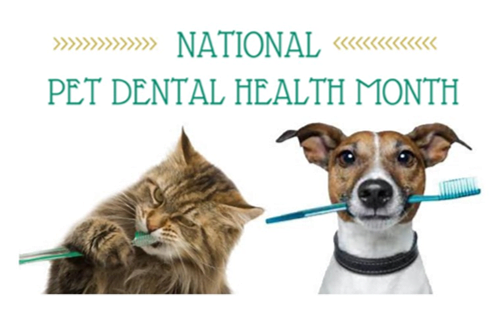Who do you think has more teeth- dogs or cats? It’s dogs! Dogs have 42 teeth and cats have 30 teeth! With all those teeth, it’s important to keep dental health in mind.
Dental cleanings are a very important part of pet ownership as the most common disease in dogs and cats is periodontal disease, which is not reversible. Veterinarians report that by age 3, 70% of cats and 80% of dogs have some level of dental disease. Dental disease also leads to 75% of health problems in animals. The bacteria and tartar build up can eventually lead to heart, liver and kidney issues.
With all these concerns from dental disease, many people wonder: “Do my pets already have dental problems? What do I look for?” The American Veterinary Medical Association (AVMA) advises pet owners to keep an eye out for bad breath, plaque or tartar buildup, red or inflamed gums, fractured or loose teeth, excessive drooling, difficulty chewing, loss of appetite, and mouth sensitivity. It is also recommended to take your furry friend to see your veterinarian at least once a year to have their mouth examined as most dental disease occurs below the gum line, where is it difficult to see.
As a pet owner, what can you do to help keep your pets teeth and gums healthy? Veterinarians recommend brushing your pet’s teeth at least 2-3 times per week and, if possible, a pet’s teeth should be brushed daily. When you’re brushing, remember to never use human toothpaste as fluoride can be very dangerous to pets! Not sure how to brush your furry companion’s teeth? Here’s a video to help get you started: Dental Health: How to Brush Your Pet’s Teeth
In addition to brushing, you can use toys and treats that are specially designed to help clean teeth. The Veterinary Oral Health Council (VOHC) also has foods and treats they recommend to keep your dog or cat’s mouth healthy.
Now that pet dental health is on your mind, it’s a great time to have them checked out or even schedule a cleaning with your veterinarian. After all, a healthy pet is a happy pet!

